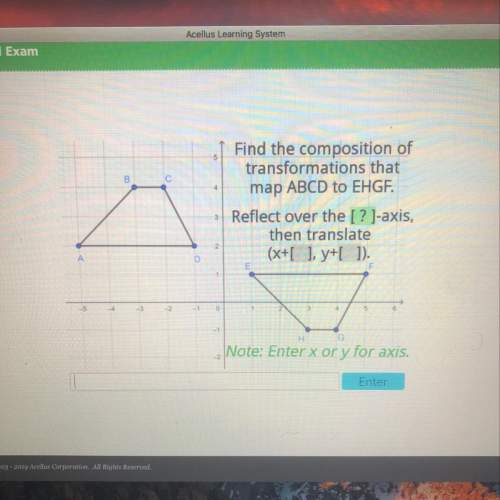
Mathematics, 10.04.2021 01:30 kenz391
A triathlon athlete swims at an average rate 2.4 miles
per hour, and bikes at an average rate of 16.1 miles per
hour. At the end of one training session, she has swum
and biked more than 20 miles in total.
The inequality 2.4x + 16.ly > 20 and this graph
represent the relationship between the hours of
swimming, x, the hours of biking, y, and the total
distance the athlete could have traveled in miles.
Mai said, "I'm not sure the graph is right. For example,
the point (10,3) is in the shaded region, but it's not
realistic for an athlete to swim for 10 hours and bike for
3 hours in a training session! I think triathlon athletes
generally train for no more than 2 hours a day."
Write an inequality to represent Mai's last statement.

Answers: 1
Another question on Mathematics

Mathematics, 21.06.2019 13:20
The ratio of two numbers is 5 to 4. the sum of the numbers is 99. what number is the greater of the two numbers?
Answers: 1

Mathematics, 21.06.2019 15:30
Maria donates a fixed amount, a, to a charity each month. if she donates $300 in 12 months, what is the equation for a? a. a + 300 = 12 b. a × 300 = 12 c. a × 12 = 300 d. a + 12 = 300 e. a + 32 = 100
Answers: 3


Mathematics, 21.06.2019 20:10
Ascientist has discovered an organism that produces five offspring exactly one hour after its own birth, and then goes on to live for one week without producing any additional offspring. each replicated organism also replicates at the same rate. at hour one, there is one organism. at hour two, there are five more organisms. how many total organisms are there at hour seven? 2,801 19,531 19,607 97.655
Answers: 1
You know the right answer?
A triathlon athlete swims at an average rate 2.4 miles
per hour, and bikes at an average rate of 16...
Questions













Computers and Technology, 30.10.2019 19:31










